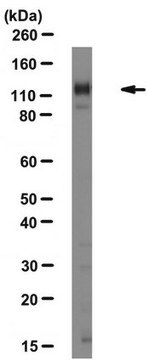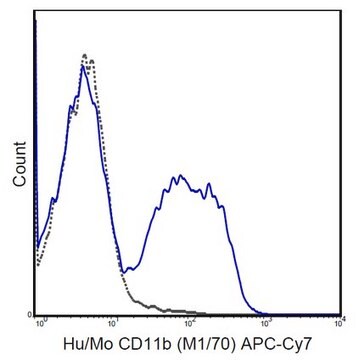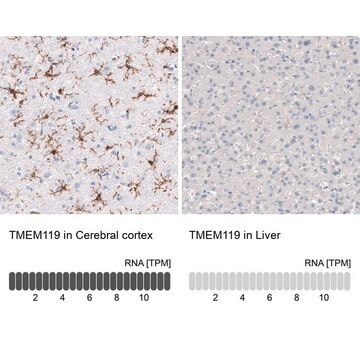Opis ogólny
Integrin alpha-M (UniProt: P11215; also known as CD11 antigen-like family member B, CR-3 alpha chain, Cell surface glycoprotein MAC-1 subunit alpha, Leukocyte adhesion receptor MO1, Neutrophil adherence receptor, CD11b) is encoded by the ITGAM (also known as CD11B, CR3A) gene (Gene ID: 3684) in human. Integrins are alpha/beta heterodimeric adhesion receptors that couple the extracellular matrix on other cells with the contractile cytoskeleton to transduce mechanochemical signals across the plasma membrane. CD11b is a single-pass type I membrane protein that is synthesized with a signal peptide (aa 1-16), which is cleaved off in the mature form. It is predominantly expressed in monocytes and granulocytes and some expression is also observed in neutrophils. It is usually found as a heterodimer of alpha and beta subunits and associates with Integrin beta-2 (ITGB2). Two isoforms of CD11b have been reported that are produced by alternative splicing. CD11b contains a large extracellular domain (aa 17-1104), a short transmembrane domain (aa 1105-1128), and a cytoplasmic domain (aa 1129-1152). It has been implicated in various adhesive interactions of monocytes, macrophages and granulocytes as well as in mediating the uptake of complement-coated particles. It contains a metal ion-dependent adhesion site (MIDAS) in the integrin A domain, which is essential for stabilization of domain A in high affinity state. The major ligand recognition site of CD11b/CD18 has been mapped to the A-domain in the CD11b subunit (CD11bA). Both magnesium and calcium ions exhibit equal affinities for the inactive CD11bA, however, upon activation there is a 10-fold increase in the binding affinity of magnesium ions without affecting affinity of calcium ions. Mutations in ITGAM gene are known to cause Systemic lupus erythematosus 6, which is characterized by wide range of system dysfunctions, principally involving skin, joints, kidneys and serosal membranes. (Ref.: Zerria, K., et al. (2006). Immunology 119(4); 431-440; Mahalingam, B., et al., (2011). J. Immunol. 187 (12); 6393-6401; Li, R., et al. (2002). J. Immunol. 168 (3); 1219-1225.).
Specyficzność
Clone mAb 107 detects CD11b/CD18 in human neutrophils. It targets an epitope with in the A domain.
Immunogen
GST-tagged recombinant fragment corresponding to 211 amino acids from the N-terminal half of human CD11bA.
Zastosowanie
Anti-CD11b/CD18, clone mAb107, Cat. No. MABF2085, is a mouse monoclonal antibody that detects CD11b/CD18 nd has been tested for use in Dot Blot, Flow Cytometry, Immunohistochemistry, and Inhibition assay.
Dot Blot Analysis: A representative lot detected CD11b/CD18 in Dot Blot applications (Li, R., et. al. (2002). J Immunol. 168(3):1219-25).
Flow Cytometry Analysis: A representative lot detected CD11b/CD18 in Flow Cytometry applications (Mahalingam, B., et. al. (2011). J Immunol. 187(12):6393-401; Li, R., et. al. (2002). J Immunol. 168(3):1219-25).
Inhibition Analaysis: A representative lot prophylactically inactivated CD11b/CD18 and prevents CD11b/CD18 binding to multiple ligands (Dehnadi, A., et. al. (2017). Nat Commun. 8:13899; Li, R., et. al. (2002). J Immunol. 168(3):1219-25).
Immunohistochemistry Analysis: A representative lot detected CD11b/CD18 in Immunohistochemistry applications (Dehnadi, A., et. al. (2017). Nat Commun. 8:13899).
Research Category
Cell Structure
Jakość
Evaluated by Flow Cytometry in human neutrophils.
Flow Cytometry Analysis: 1 µg of this antibody detected CD11b/CD18 in one million human neutrophils.
Opis wartości docelowych
127.18 kDa calculated.
Postać fizyczna
Format: Purified
Protein G purified
Purified mouse monoclonal antibody IgG1 in buffer containing 0.1 M Tris-Glycine (pH 7.4), 150 mM NaCl with 0.05% sodium azide.
Przechowywanie i stabilność
Stable for 1 year at -20°C from date of receipt. Handling Recommendations: Upon receipt and prior to removing the cap, centrifuge the vial and gently mix the solution. Aliquot into microcentrifuge tubes and store at -20°C. Avoid repeated freeze/thaw cycles, which may damage IgG and affect product performance.
Inne uwagi
Concentration: Please refer to lot specific datasheet.
Oświadczenie o zrzeczeniu się odpowiedzialności
Unless otherwise stated in our catalog or other company documentation accompanying the product(s), our products are intended for research use only and are not to be used for any other purpose, which includes but is not limited to, unauthorized commercial uses, in vitro diagnostic uses, ex vivo or in vivo therapeutic uses or any type of consumption or application to humans or animals.
This page may contain text that has been machine translated.








